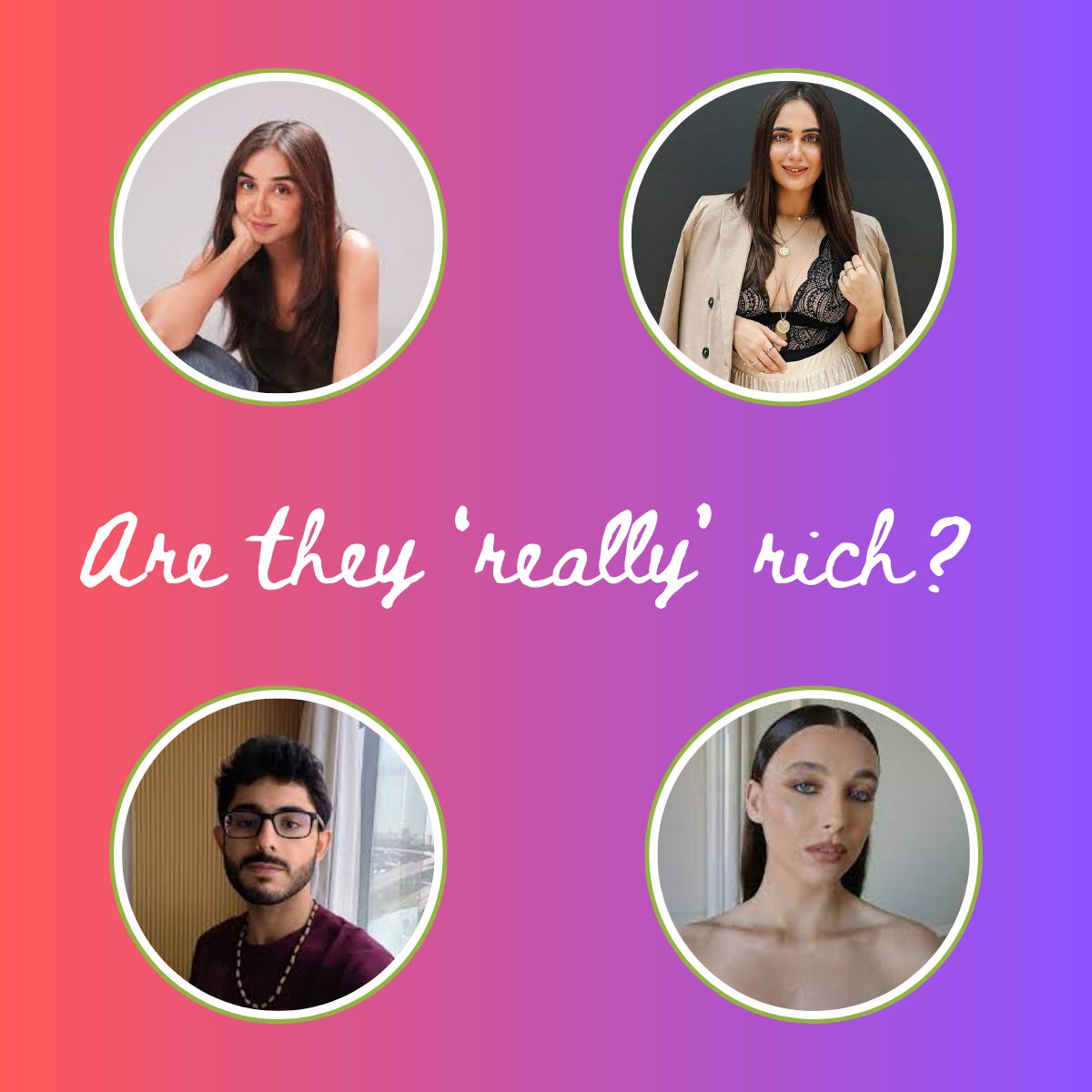Are Instagram Content Creators Really the Richest People in the World?
or are they just pretending?
Welcome back! We’re ready for Day 2 of the week, but before we start the day let’s remember:
‘Success usually comes to those who are too busy to be looking for it’
So, let’s roll up our sleeves and get to work!
We all see those Instagram stars living lavish lives – the designer bags, luxury cars, travel snapshots, and, of course, those six-figure brand deals. But it begs the question: are these creators truly the richest people in the world? Today, let’s get real about what’s going on behind the posts.
What they’re doing right
Here’s what’s impressive: top creators don’t rely on a single revenue stream. The smartest among them have built a mini-empire across different income sources. Let’s look at some examples:
📌 Prajakta Koli (aka MostlySane)
Prajakta started on YouTube and quickly expanded into other platforms, working with brands, starring in Netflix series, and even making her way to Bollywood.
📌 Kusha Kapila
Kusha’s humor and unique content style brought her fame on Instagram, but she’s moved beyond it. Today, she’s a content creator, actress, and influencer, working with brands like Levi’s and hosting reality shows. This diversification keeps her career dynamic and future-proof.
📌 CarryMinati (Ajey Nagar)
Ajey started with roasting videos on YouTube, but he didn’t stop there. He expanded into music, merchandise, and high-profile collaborations, making his income streams diverse and stable.
📌 Outside of India, there’s Emma Chamberlain
She started with quirky YouTube vlogs and quickly caught the world’s attention. Today, she’s not just a creator but a businesswoman with her own coffee brand, Chamberlain Coffee, along with huge brand deals with luxury labels like Louis Vuitton.
What they all have in common is a smart approach to multiple income streams: they have brand partnerships, their own products, affiliate links, and even paid appearances. This gives them control over their income – it’s no longer about a single platform but about creating their own brand.
But is it really sustainable?
The big question is how long they can maintain this momentum. As lucrative as the creator economy seems, it’s also incredibly fragile. Algorithms change overnight, trends shift, and apps fall out of favor just as quickly as they came in.
Remember Vine? Vine stars disappeared overnight when the platform shut down, and only a few managed to survive by moving to other platforms.
Creators like Dolly Singh have navigated this well by moving from Instagram skits to bigger things, like roles in Bollywood films. But not everyone can do this, and many are tied heavily to one platform.
The truth is, if Instagram or YouTube shifts its algorithms, some creators could find themselves scrambling for stability. And that means one day they could go from “influencer” to “unemployed” fast.
Fame & fortune can also bring relationship troubles
It’s not just the spotlight; it’s the daily grind and lifestyle expectations that can lead to burnout and even divorces. Take Kim Kardashian and Kanye West – two of the biggest names in the world of fame, whose relationship struggles were magnified by their constant visibility and lifestyle demands.
Closer to home, creators have voiced the pressure it can place on personal lives. Komal Pandey, for instance, has shared her experiences with burnout, and Savi and Vid of Bruised Passports (the popular travel influencers) often talk about the toll that non-stop travel and content creation have taken on their relationship and mental health.
Another classic example is the chaos that just went down between Gaurav Taneja and Ritu Rathee.
When you’re constantly “on” for the camera, the boundary between personal and public life disappears, and that can take a huge toll. Every disagreement, every challenge, every emotional moment risks being broadcast – and that exposure isn’t easy to handle.
So, are they really the richest?
If you ask me, some of them might be rich right now. But their wealth is very different from traditional wealth. It’s volatile and often depends on staying relevant in an industry that changes faster than any other. The reality is that one platform update or a change in trends could send them back to square one.
So, what do you think? Let us know in the comments.
That’s it for today! We will be back again tomorrow 👋


